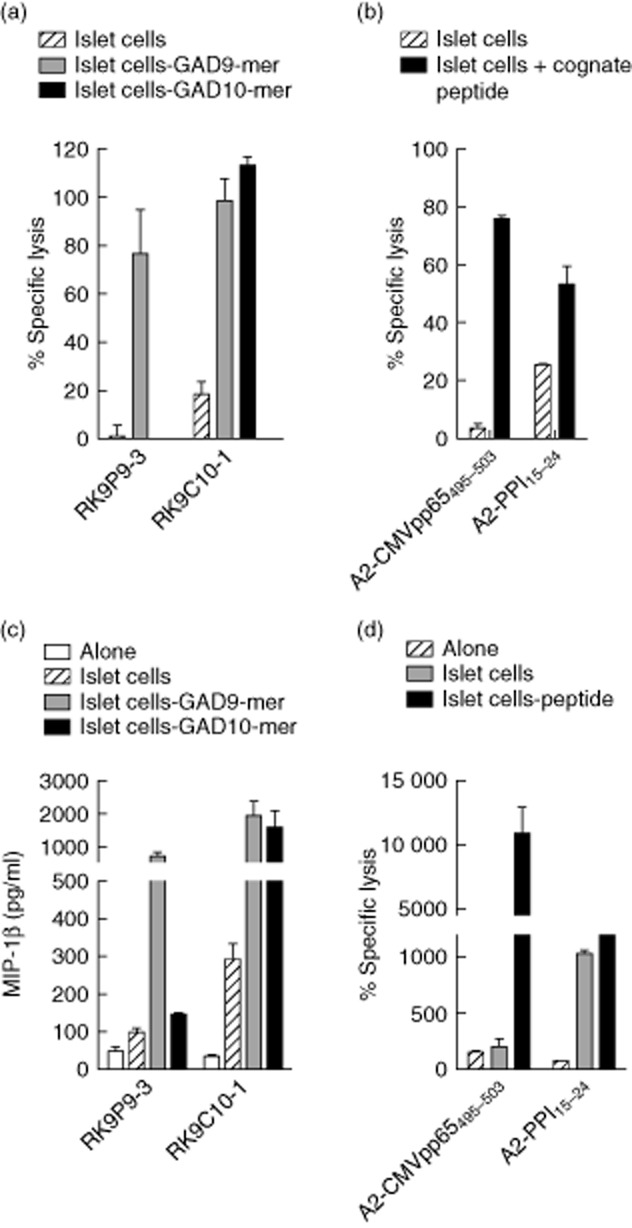Fig. 4.

CD8 T cell clone recognizing glutamic acid decarboxylase 65 (GAD65)114–123 recognizes and kills human islet cells. (a) Cytotoxicity assays were performed using RK9P9-3 and RK9C10-1 clone cells and human leucocyte antigen (HLA)-A*0201+ human islet cells as targets. As shown in (a) RK9C10-1 robustly kills islet cells [comparable to the positive control (b), namely killing of islet cells from the same preparation by the preproinsulin (PPI)-specific CD8 T cell clone 3F2 specific for PPI15–24], whereas RK9P9-3 displays background levels of specific lysis in the absence of cognate peptide. (b) Negative control, cytomegalovirus (CMV)-specific clone A2-CMVpp65495–503, which does not kill islet cells in the absence of cognate peptide. (c) Analysis of supernatants of 18-h co-cultures of clone cells and islet cells for secretion of macrophage inflammatory protein (MIP)-1β. RK9C10-1 showed robust production of MIP-1β in response to islet cells, whereas RK9P9-3 production of MIP-1β is similar to background. (d) Negative and positive control responses to the same islet cell preparations. Cytotoxicity assays were performed at an effector : target ratio of 25:1. Bars show means of triplicates and error bars the standard errors of the mean (data are representative of n = 2 experiments using the same islet donor).
